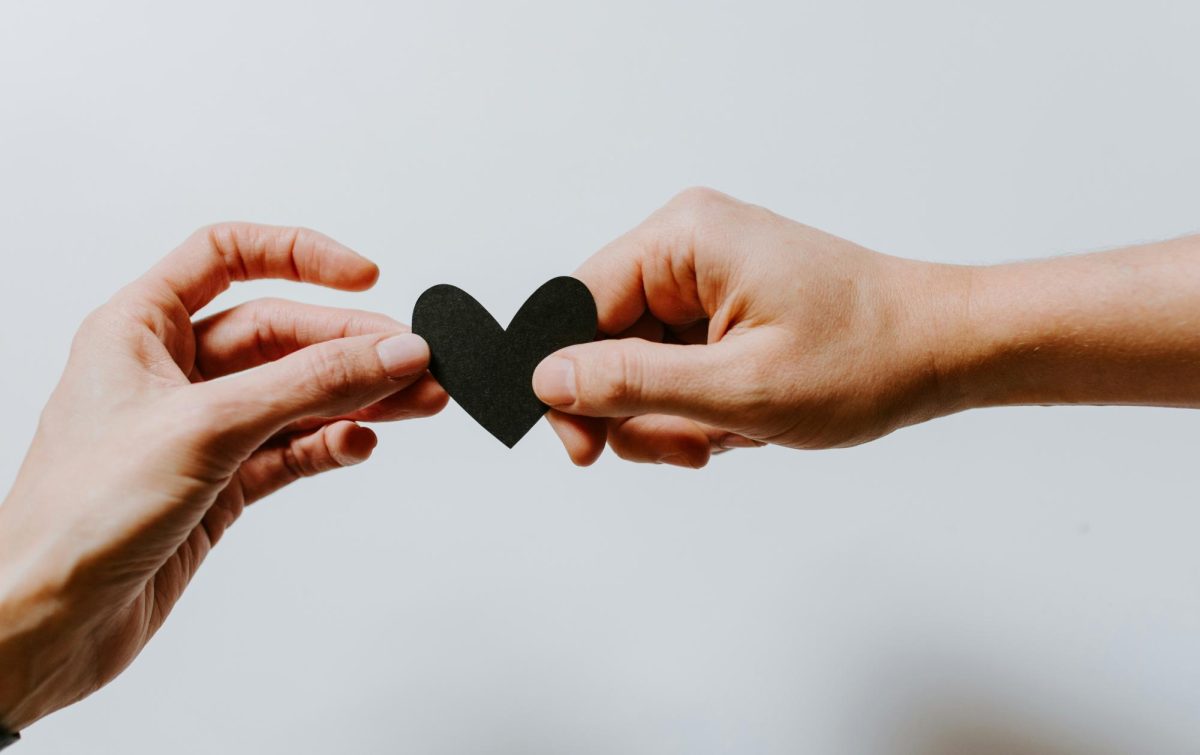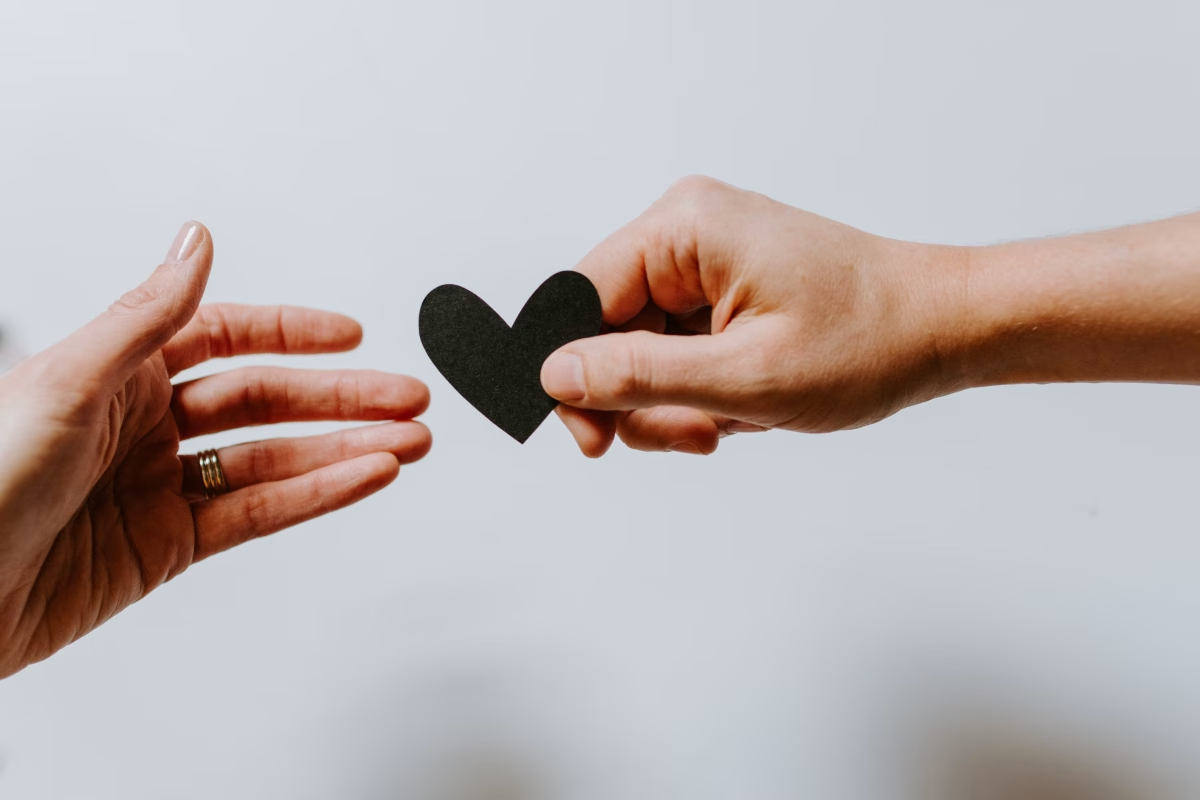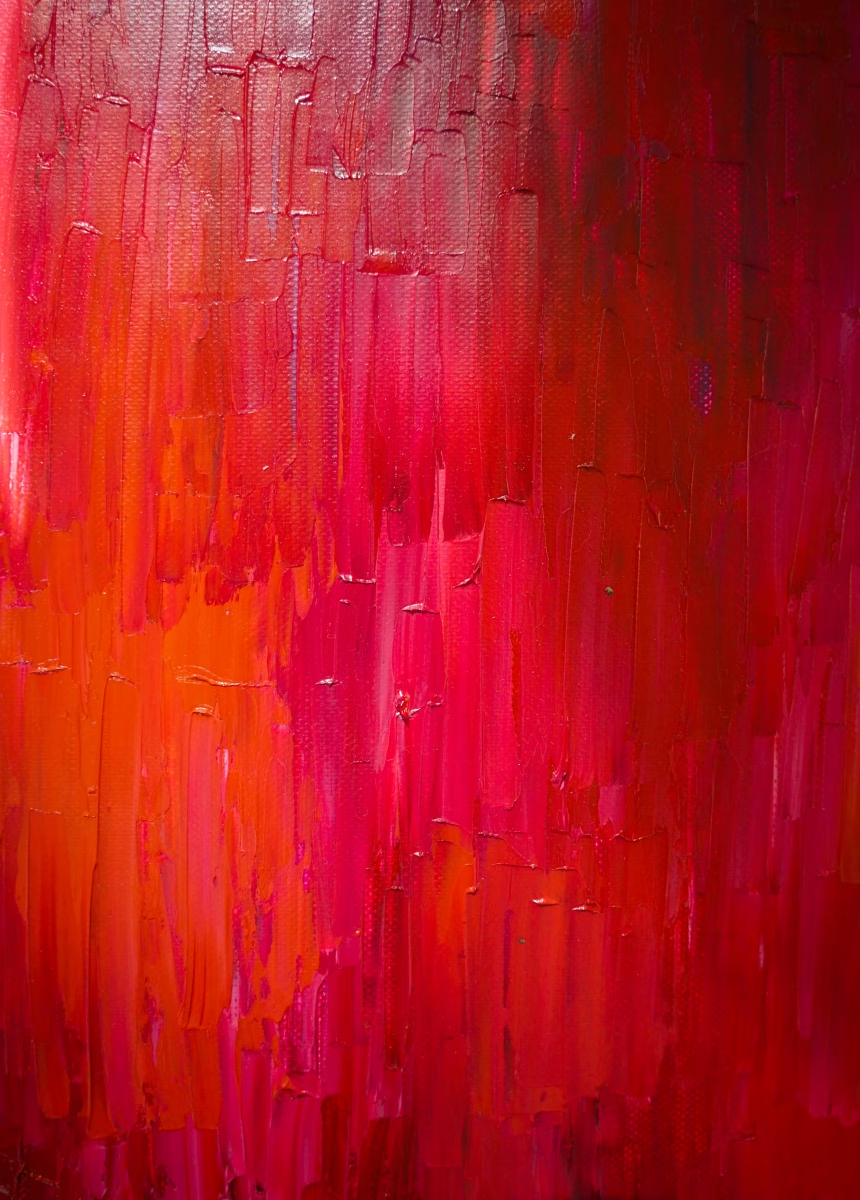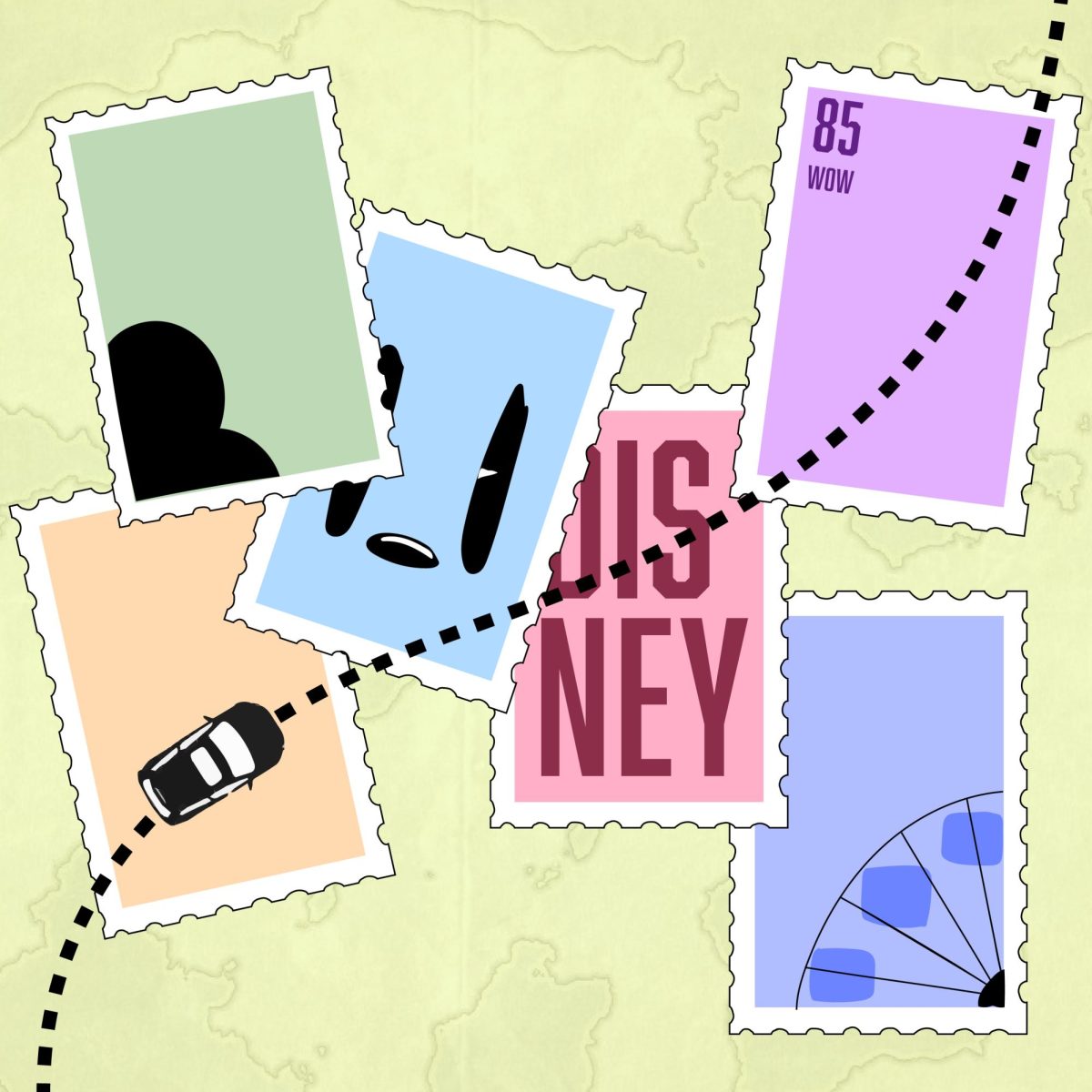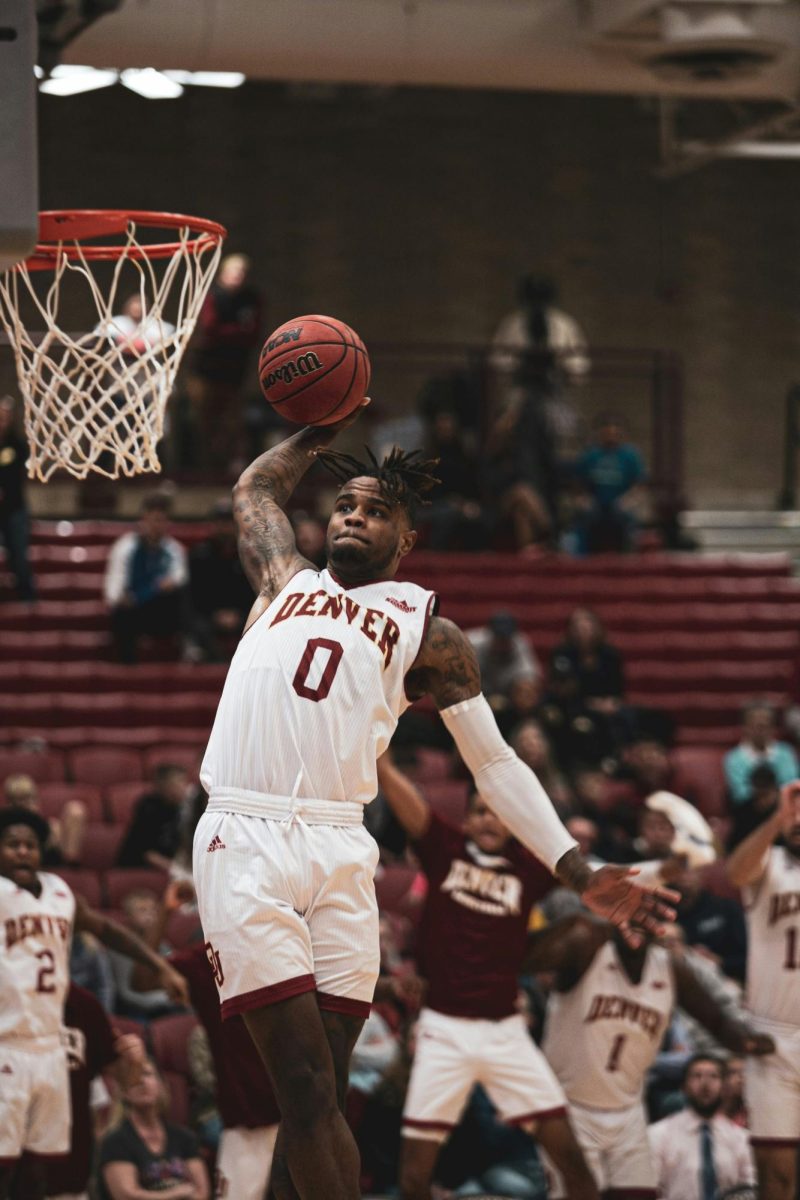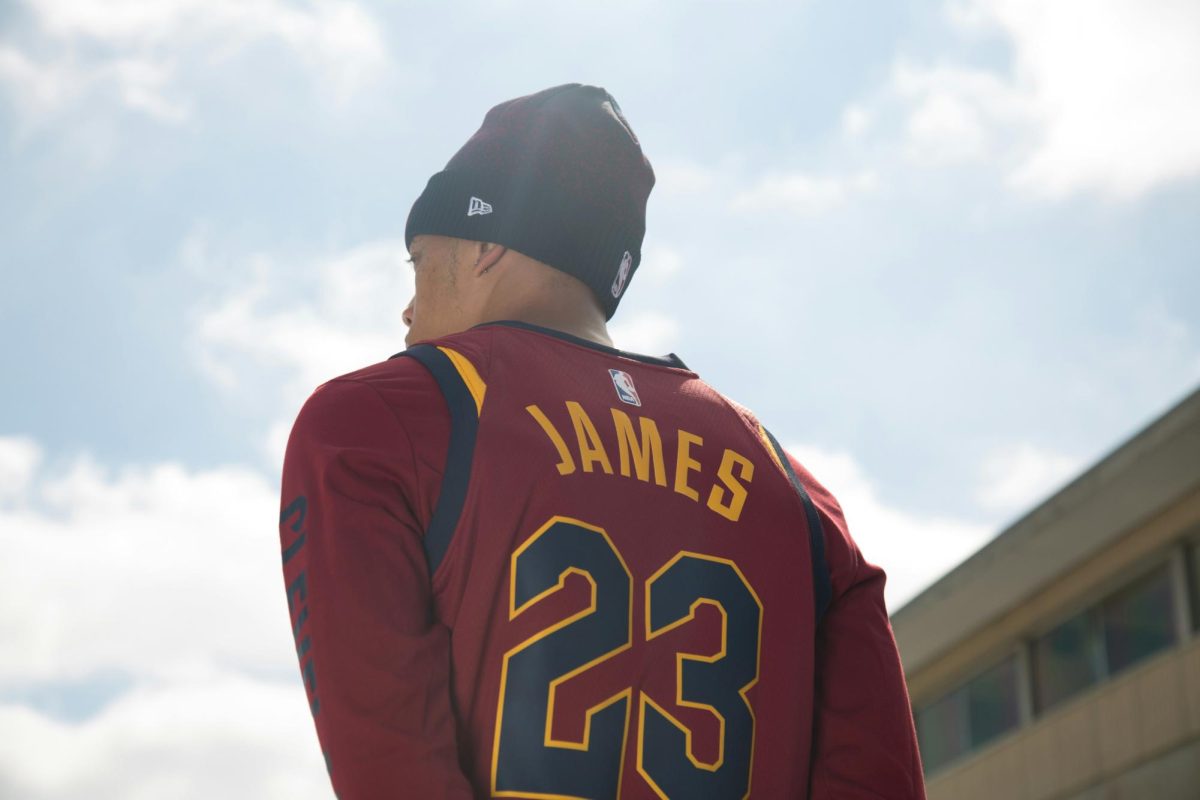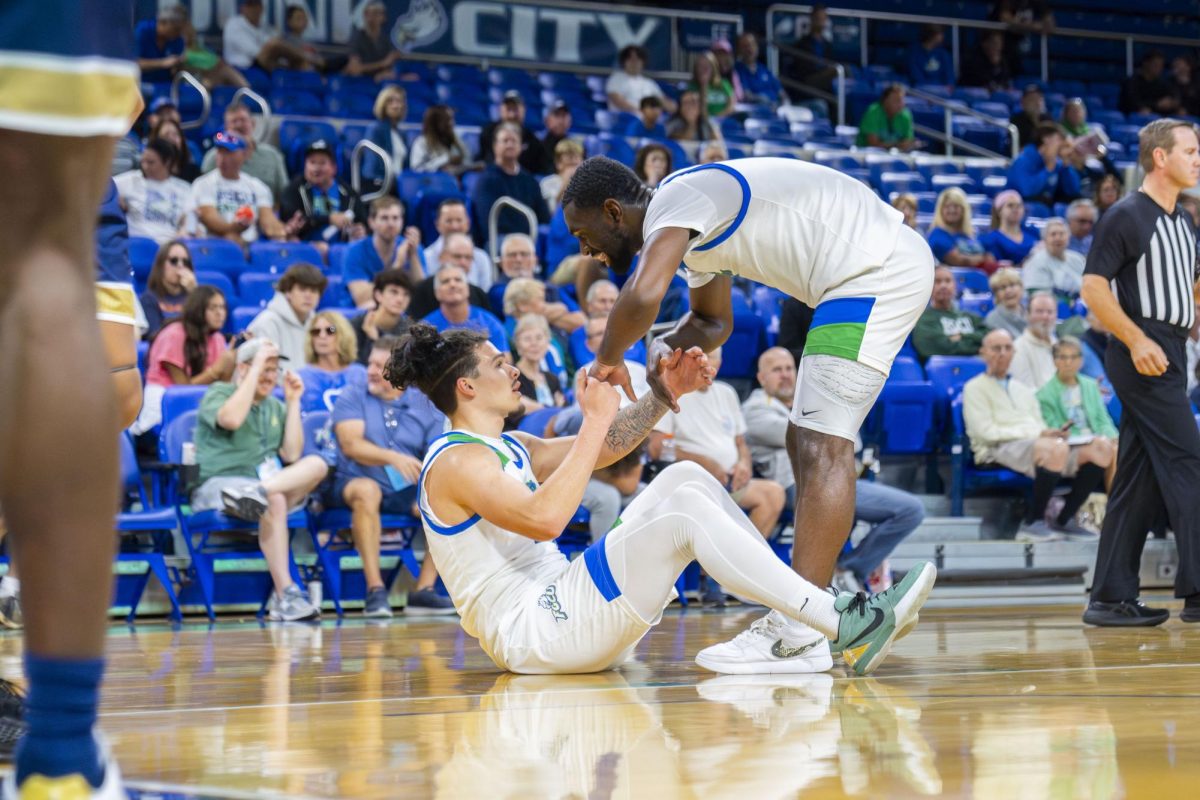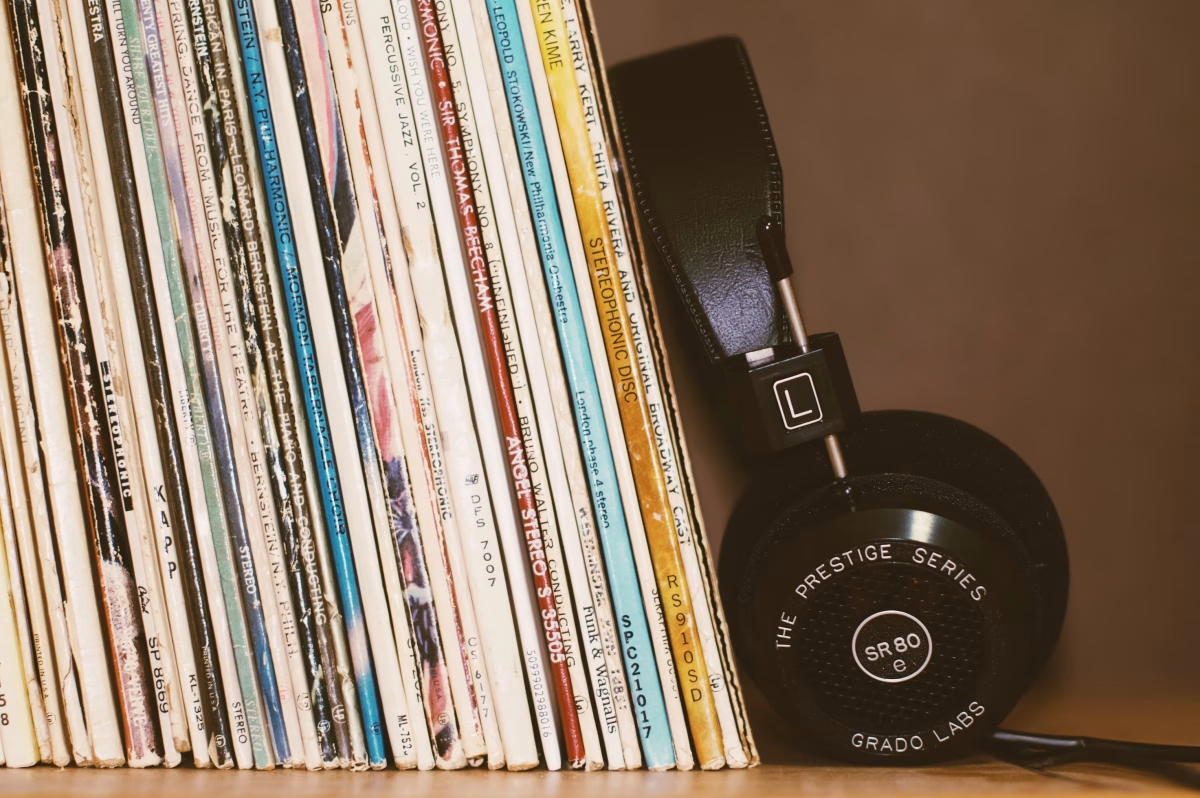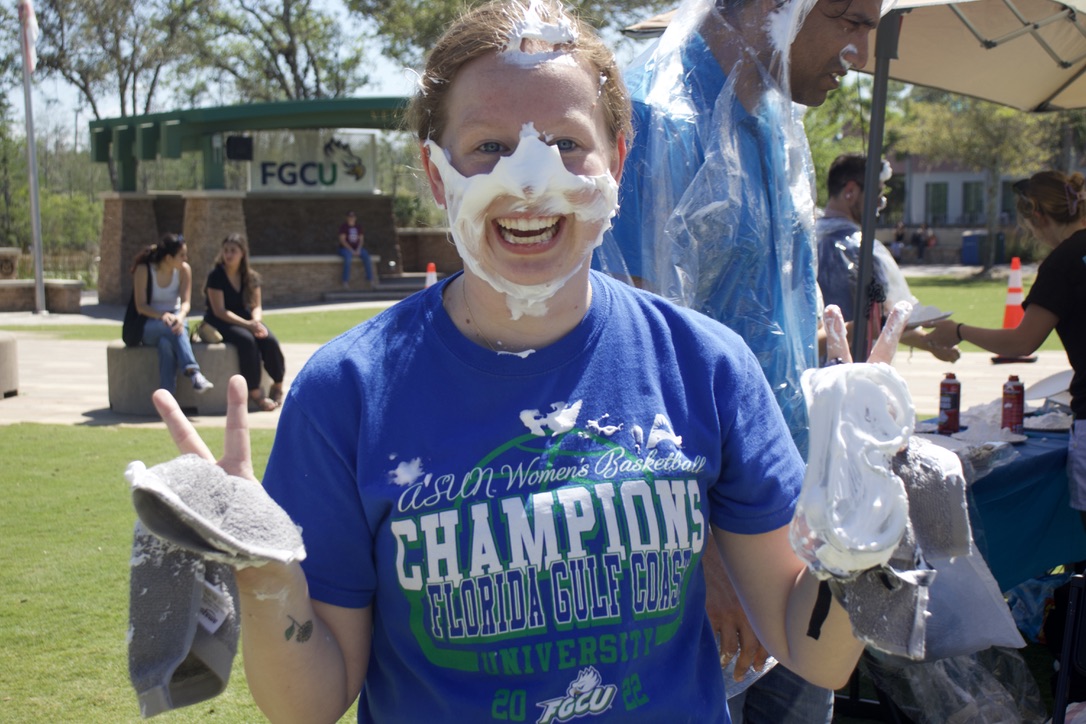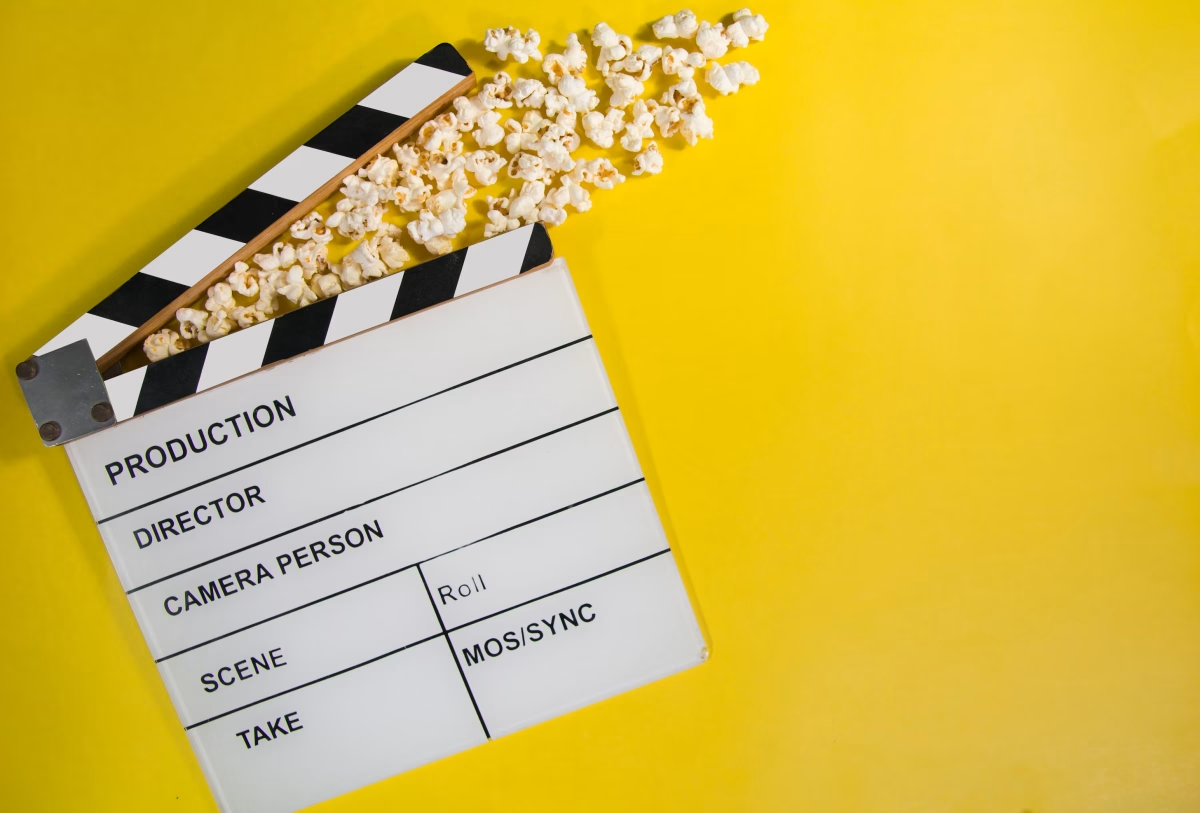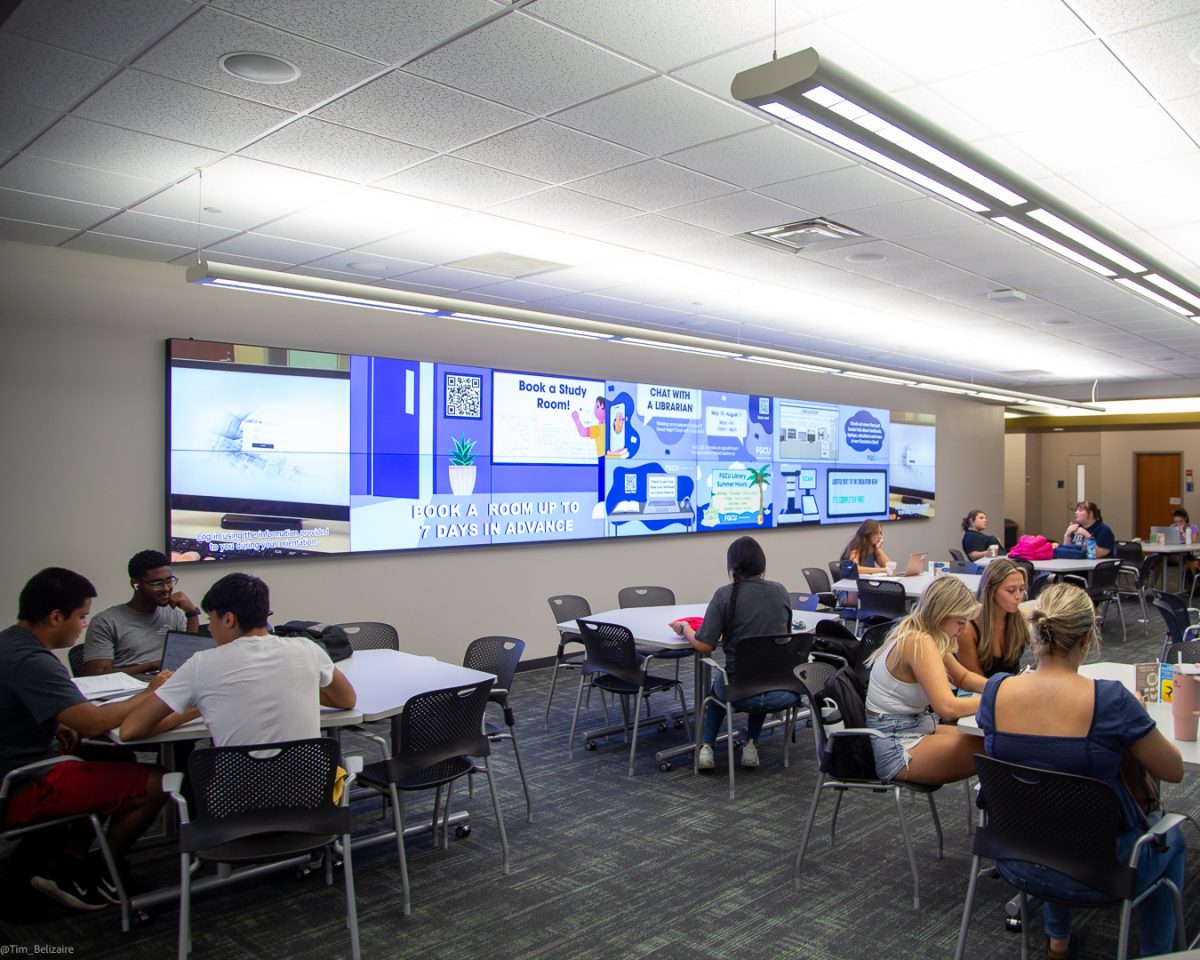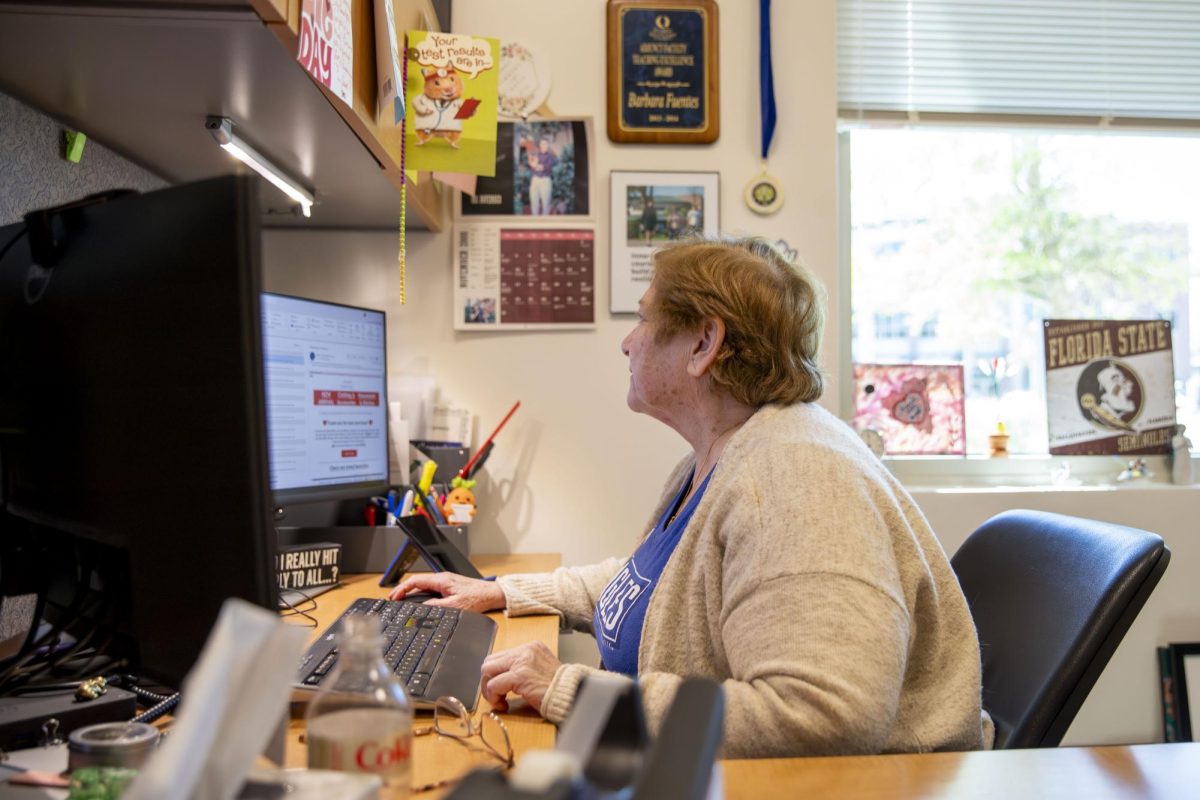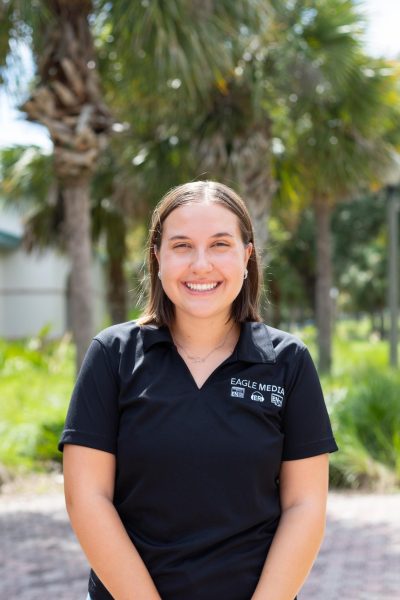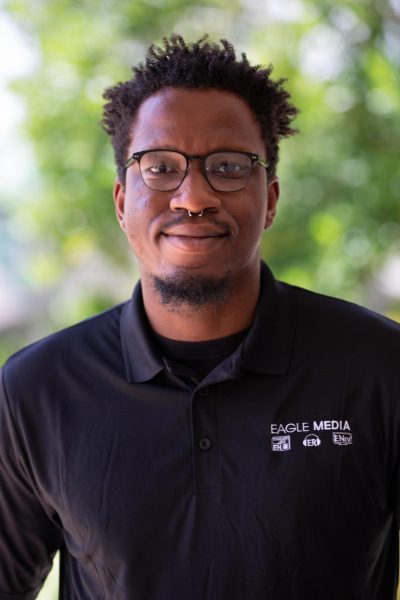The Bradshaw Library is a place where students frequently go to study, do homework, get Starbucks and catch up with friends, but there are so many services the library offers to students that may not be as well known.
The data visualization wall, which is the newest addition to the library, was created as a way for students, faculty and staff to collaborate, study, give live presentations or host events.
‘The Wall’ is located in library west on the first floor and is run on Haivision’s Video Wall Software, allowing for advanced customization through a variety of different sources.
“One of the biggest benefits of the space is its interactivity, scalability and ability to switch from one purpose to another with no major changes to the space,” Matthew Losey, Creative Commons lab coordinator, said. “You could move from a presentation space, to a study space, to an event with minimal effort.”
The wall can be reserved in 1/4 sections, which allows for multiple uses at one time. Students can use the space to broadcast their own devices but must complete an orientation if they are first-time users. Users can reserve a section of The Wall for up to two hours per day.
Students are also able to borrow equipment from the circulation desk. Loanable items include cameras, headphones, phone and laptop chargers, laptops, calculators and portable chargers. The loan time varies for each item.
The library offers many technological services, including 3D printers. The library owns three printers that are available for use in the 3D Printing Studio in library west 119.

“3D printers allow users to bring their designs to life in a way that was previously unavailable to them,” Losey said. “Using the 3D printers allows students to see the full process of creating anything they wish, from designing to iterations to the final product, all in a time frame that has been previously unavailable.”
To begin the process of printing something, students will need to submit a ZIP file containing the model of what they would like printed. If there are errors, the Library Makerspace will set up a consultation to give advice on the best way to proceed with printing the model.
However, using the 3D printer does require a purchase. The prints come in sizes ranging from small to large, which vary in price. This has to do with the amount of plastic that is used in the print. Prices range from $3.25 to $10.80. There is also an option to make a custom-size print.
The library also has regular printers available for use on the first floor. Black and white pages are $0.06 per page and colored pages are $0.30 per page.
Scanners are also available next to the circulation desk and can be used during library hours. Students are able to scan things like book chapters, notes and any documents at no charge.
The Glowforge, the library’s laser printer, is located in library west 116. Students, faculty and staff have the opportunity to use this machine during their time at FGCU.
This machine uses a CO2 laser to either cut through or engrave the surface of the material someone puts into the machine. The printer is unavailable for public use but can be accessed through the side screen on the printer where someone can make a request and submit a file. The average price of using the Glowforge in previous projects has been between $2 and $3.
“While the Glowforge can be used very practically, creating items such as boxes it is also used for more creative designs,” Losey said. “I worked with a student to create prototype strap holders for a business idea, and another where we created custom signage for a staff member here on campus.”
As of this summer, the library’s media production studios have expanded and moved. Once a combined studio, it is now made up of two separate rooms, located in library east by the computer labs. The rooms are divided into the audio production studio and the visual production studio.
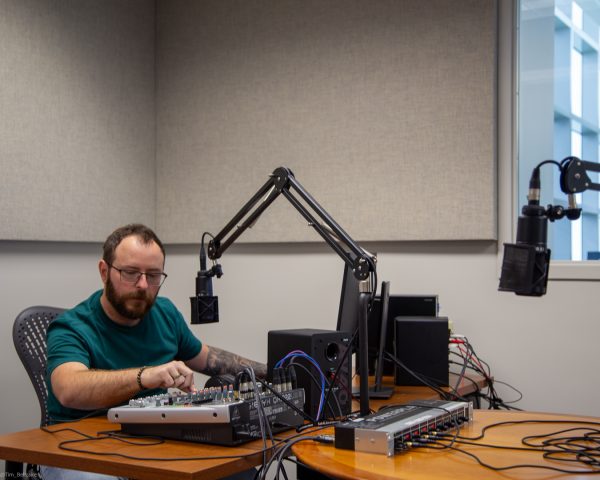
There are now two separate booking options for the two studios. To make a studio reservation, students must complete an online or in-person orientation. Upon completing orientation, they will then be able to check the availability and make a reservation.
The audio production studio contains quality recording equipment, including four microphones, a camera and an audio mixing and recording station. The video production studio contains a green screen, an HD broadcast camera, a mirrorless DSLR camera, LED lighting, paper backdrops, four microphone mixers, a teleprompter rig and a video capture and editing station.
“The studios are there for students to use creatively. I think there will be more opportunities for students to create multimedia content to do coursework, as instructors pick up interest in podcasts and video as options for assignments,” Anna Carlin, FGCU’s instruction technology librarian, said. “But I also hope that by providing the space and equipment, students will have the opportunity to try some things out for their own creative or entrepreneurial projects.”
For more information on Bradshaw Library’s technological services, visit the library’s website to read about orientations, reservations and more services the library offers.

